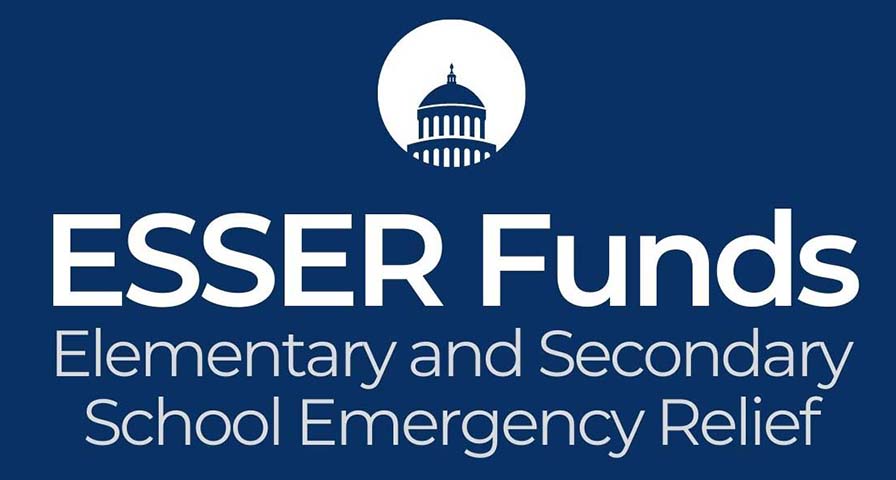
Final Weeks Could See a Flurry of Funding Requests Approved as Districts Spend Down ESSER III Allocations
If those who are analyzing spending trends are correct, local education agencies (LEA) may allocate more than $25 Billion between now and Sept. 30 as they try to spend out their final Elementary and Secondary School Emergency Recovery (ESSER) funds.
The most recent update on ESSER III spending indicates that, as of June 30, states still had more than $27 Billion left to allocate. The data shows that schools spent $6 Billion of their remaining ESSER funding between May 31 and June 30, and $27 Billion still remains.
While federal reporting lags and the amount available may be less than that, experts acknowledge that a significant amount of ESSER III funding must be awarded or it will be sent back to the U.S. Treasury.
ESSER guidelines show that funds must be allocated by Sept. 30, 2024 and spent by Jan. 31, 2025 or be sent back.
An analysis done by Education Week indicates that LEAs were able to spend 99% of their ESSER I and ESSER II allocations. If that trend repeats itself with ESSER III, the amount of unspent funds by each allocation would be:
- ESSER I: $43 Million (of $12.8 Billion allocated)
- ESSER II: $517 Million (of $52.9 Billion allocated)
- ESSER III: $1.2 Billion (of $119 Billion allocated)
Race to the Finish
A look inside the latest update shows that:
- Schools in Florida, New York, Pennsylvania, Illinois, Texas and California still have more than $1 Billion that must be distributed
- 31 states still have at least 20% of their ESSER III allocation available
- Only 7 states – Delaware, Alaska, Hawaii, Idaho, North Dakota, Wyoming and Minnesota – have less than $100 Million available to award
As highlighted in previous ESSER III updates, remaining funds will vary by local school district, teachers seeking ways to fund purchases for additions such as IHT heart rate monitors might benefit from making one more request for these funds.
Finding Success Requesting ESSER III Funding
Districts have used a significant portion on their ESSER funding to pay for programs and tools that meet at least of the key COVID-recovery goals and guidelines:
- Addressing learning loss through digital tools and tech
- Providing social-emotional learning
- Addressing challenges in physical health and well-being and
- Investing in technology improvements
Heart rate monitors such as the IHT ZONE and the training to use them effectively can be covered by ESSER funding. Department leaders in Illinois, California, Wyoming and Hawaii accesses ESSER funding to purchase heart rate monitors this year.
Hawaii Department of Education District Education Specialist Jason Schafer worked with some of the teachers he supports after saw a demonstration of IHT ZONE heart rate monitors at the state conference. He worked with the teachers to create the proposal and then submitted the request to the proper channel. His advice?
“I would say the number one priority for PE teachers is to have an advocate who sits in the decision-making seat,” Schafer said. “An advocate who knows your program, knows what you provide in your program and the benefits that it provides to the school, the students and the community.”
In Riverton, Wy., retiring teacher Jay Dayton worked with David Collins to add more heart rate monitors to ensure more of the middle school students they teach benefit from the technology. Dayton said completing a proposal takes a bit of work but the benefit in the end is well worth the effort.
“I know a lot of people think they can’t do it or won’t do it because it seems like a lot of work or they’re used to being told ‘no,’” he said. “Technology like this is a great tool.”
In Pomona, Calif., teacher Kalani Hobayon worked with department leader Michelle Baumgartner on a proposal that won ESSER funding to bring IHT ZONE heart rate monitors to 24 elementary schools in the Pomona Unified School District.
“Everything kind of fit hand-in-hand,” Hobayon said. “We had technology that we could use for PE if we had this money, so we wanted to invest in it.”
After Baumgartner answered questions about student use and outlined the short and long-term benefits, the school board signed off and allocated the funding. The hope, Hobayon said, is to eventually expand the heart rate program into the middle and high schools.
“Hopefully the district sees that the investment is worth it and eventually we could get to the secondary and high school levels,” Hobayon said. “It’s a good pilot program at the elementary level because we’re going to give these students a basic foundation.”


